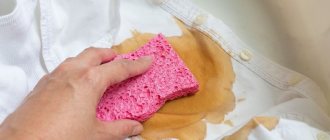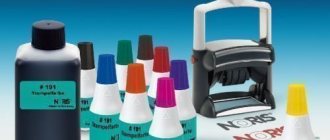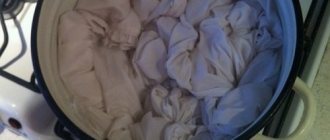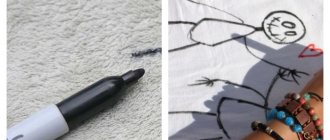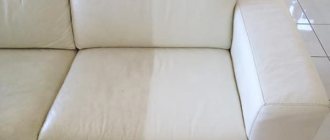Superglue is a strong adhesive that is popular due to its ability to glue objects made of different materials together. If handled carelessly, it can get onto the surface of the fabric and leave stains that cannot be removed during normal washing or using household products. Don’t rush to throw away your favorite denim trousers or jacket that are stained with superglue. You can restore the original appearance and remove the stain using substances, which we will talk about in more detail.
How to remove glue using Dimexide?
Attention! Remember! The substance penetrates very easily into the blood under the skin, therefore, any work with it should be carried out only with gloves. Do not work with bare hands.
Dimexide dissolves superglue perfectly. For this process, you can use various methods of influence:
- Rub
- Soak
Which method to choose depends on various factors, the main one being the type of surface.
Be sure to familiarize yourself with the effect the solution has on various materials.
In addition to superglue, the product can easily remove polyurethane foam.
Cleaning methods depending on the type of glue
- Cyanoacrylates (Superglue, Secunda, Cosmofen). The products have a similar composition and operating principle and do not contain solvents. Cyanoacrylates harden due to the reaction of water and air in the bonded surfaces. When hardened, cyanoacrylate resembles plastic. It can be removed with acetone, dimexide, anti-glue, soapy water. To avoid damaging the plastic, it is better to use anti-glue or soap solution.
- Medical BF-6. Contains synthetic resin, rosin. It dissolves in alcohol, but the composition does not react to oils, kerosene, gasoline and acids.
- Moment. A group of substances with various additives, resins, acetone, ethyl acetate, rosin. They dissolve well with dimexide and acetone.
- PVA (water soluble). The fresh glue is removed with water, and the dried glue is lightly rubbed, its edge is lifted with a fingernail or blade and the entire film is carefully removed. Can be removed with any solvents, including acetic acid.
- Titanium. It can be dissolved by gasoline, dimexide or concentrated plumbing acid. To prevent damage to the plastic, traces are cleaned off as quickly as possible.
How to remove superglue using Dimexide
The difficulty of removing superglue depends on whether it is on a flat surface or whether it has flowed into a crack. Naturally, if the glue is in the crack, it is much more difficult to remove it.
If the second option, then you should soak the hole with glue in dimexide and wait. Once every day or two, the top layer should be removed and the rest left to soak. This will speed up the process. The main thing is that it is a place that the solution will not spoil.
The product can be used for any other glue using the same method as when removing superglue. If you use dimexide against other types of glue, soaking is unlikely to be necessary. Dimexide from Moment, PVA, silicate, carpentry glue will help you.
Home remedies to remove superglue
If the fabric is capricious, and the product is expensive, in order not to spoil it, it is better to try to scrub the fabric using delicate home remedies.
Rubbing alcohol to remove glue stains
Although ethanol is not as effective at dissolving glue stains, it can still be used to gently scrub off superglue.
You need to soak a cotton swab in pure alcohol and rub the stain with force from the edges to the center. When the cotton wool becomes dirty, it should be changed. There is no need to soak the fabric, as the alcohol evaporates very quickly.
How to remove glue stains with table vinegar
Table vinegar can be used to clean thin, capricious fabrics and even colored ones. It is necessary to soak the soiled clothes for a quarter of an hour in a solution of 250 ml of vinegar and 1 liter of warm water.
All that remains is to scrape off the glue with a blunt object and remove the remaining residue with tweezers. Vinegar should not be used on synthetic fabrics.
Removing stains with table salt
Salt helps remove stains so well that it can even handle superglue.
It is necessary to soak the product in a strong saline solution, for the preparation of which 2 tbsp. l. The product is dissolved in 500 ml of warm water. The item is soaked for a couple of hours. After this time, the glue can be easily removed with a blunt object.
Baking soda to remove glue stains
Just as in the case of salt, the item must be soaked in a strong soda solution. To prepare the solution, dissolve 50 g of soda in 500 ml of warm water. You can also apply a paste of baking soda and water to the stain and leave for a couple of hours. Soda must be constantly moistened.
Finally, the glue is collected with a blunt object and the residue is removed with tweezers.
Removing superglue with soap and boiling
Superglue is sensitive to high temperatures, so boiling clothes in a soapy solution will help to quickly remove it.
Requires 5 tbsp. l. Dissolve shavings of simple laundry soap in 2 liters of water and boil the item for half an hour. All that remains is to scrape off the glue with a blunt object and wash the thing. This method is only suitable if the material can withstand prolonged boiling.
Removing superglue stains with citric acid
If the stain has not yet become old and very dry, citric acid will help remove it.
It is necessary to dissolve 2 tbsp in 300 ml of water. l. lemon acid and moisten the affected area with this solution or soak it in the solution. After an hour and a half, you can wash the product as usual.
Step by step cleaning
So we have already learned that there are 2 ways to deal with dimexide with superglue.
So, the first way:
- Soak (time depends on the degree of contamination and where the contamination is located)
- Scrub (it is better to use a hard sponge)
- If necessary, repeat both points in turn.
- Finally, rinse with warm water (preferably with added soap).
This method can be used to wash rough materials that will not be harmed by the product: rough fabric, uncoated wood, car body, suspended ceiling.
If you are working with delicate materials that the product can damage, then use the same procedure, but do not soak. You will need the hard side of the sponge soaked in the solution and use it to scrub the surface. These include: soft fabric, plastic items, coated wood, leather, lacquered surfaces, laminate, furniture, shoes (shoes, sneakers, boots).
When using dimexide on combined objects, such as a car, remember that by using it on a surface where the solution cannot damage anything, you can catch the material that will deteriorate from interaction with it. Again, using the example of a car, the plastic rims of the headlights or the radiator grill may be damaged.
You might be interested in reading the article “How to Remove Super Glue from Jeans at Home.” Read here...
What to do if super glue has dried out?
If the glue still has time to dry, then the following compositions are used:
- Cleaner. It is applied to the glass, after a few minutes the glue is removed with a knife.
- White Spirit. It is applied to the glass with a cotton pad, after 15 minutes the softened glue is removed with a stationery knife.
- Vegetable oil. ...
- Liquid soap, dish soap.
9 Dec.
2022 Interesting materials:
How to choose a desk for a first grader? How to choose a plinth for the floor? How to choose a plinth? How to choose tiles for the floor in the kitchen? How to choose wall covering? How to choose a port for a Canon printer? How to choose curtains for the hall? How to choose a bedding set? How to choose the right wallpaper? How to choose the right diet?
What surfaces can be cleaned from glue with dimexide?
Dimexide against superglue helps on various surfaces, but you need to take into account that it affects both the glue and the surface. For this reason, different approaches should be applied to different materials.
Plastic
When removing glue from plastic, you should never soak it, only wipe the stain with a cotton swab, otherwise you risk damaging the surface. If you take dimexide, removing the glue will be easy. But it’s better not to even try to use a solvent.
Tree
To remove the glue layer we use dimexide, but then we will have to sand it. If the wood is coated, the product cannot be used.
Textile
It all depends on the type of fabric; dimexide can be used to remove glue from coarse fabrics. But if you have thin, delicate fabrics, it’s better not to even touch dimexide to them, otherwise your clothes will be completely ruined.
Glass
In principle, you can use dimexide to remove superglue from glass, but keep in mind that this only applies to ordinary glass. If your optics are stained with superglue, then you can damage them irrevocably with dimexide, so it’s better to choose a different option.
Rubber
For rubber it is better not to use it at all; it may happen that it becomes saturated with dimexide and becomes brittle.
Dimexide for superglue is a very effective remedy, but when working with it, the main thing is to remember safety precautions; under no circumstances ignore gloves. Be sure to consider the type of surface on which superglue is applied. If you take into account all the nuances, then you will need a minimum of effort to achieve the desired result, and at the same time you will not damage anything with this solution. This is a super tool in the fight against these kinds of problems.
Don't forget to subscribe to our YandexZen channel!
How to clean car plastic
Remains of adhesive are removed from plastic parts of the car with dimexide. Work with rubber gloves. It is necessary to prepare in advance cotton swabs, rags made of coarse fabric, wooden or plastic scrapers.
Dimexide is applied to the area and thoroughly rubbed into it for 2-3 minutes. After softening, the mark is removed with a cotton swab, scraper or dry rag. If the stain is thick, remove it layer by layer, alternating rubbing with dimexide and scraping several times. After cleaning, the car plastic is moistened with water and wiped dry with a rag.
Since dimexide is aggressive, all work is carried out very quickly. Any delay may lead to the destruction of parts.
Rules for removing glue from various surfaces
When working with superglue, drops can get on the parts being glued, the table, the floor, clothes and hands. And in each specific case the methodology will be different. But there are some general recommendations:
This is perhaps the most common problem. All it takes is one careless movement - and there will already be a sticky mark on your fingers and palms, to which something can instantly stick. Or the fingers will completely stick together.
There are many methods for removing adhesive film from skin. Let's name five of the most effective and safe ones.
Before using any of these techniques, it is advisable to soak your hands in hot, soapy water for 5 minutes.
Be sure to lubricate your hands with a nourishing cream after the procedure to prevent the development of irritation and help the skin recover.
In addition, it is permissible to treat the skin with a solvent, “Dimexide” or “Anti-glue”, but all of them are harmful to health, and therefore it would be wise not to rush with them and use them only as a last resort.
In general, you don’t have to do anything at all: in a couple of days the scales will fall off on their own. To speed up this process, simply wash your hands and use a scrub more often.
Textile
Another common problem is the composition getting on clothes or furniture upholstery. The method of eliminating trouble here often depends on the type of material: the thinner the material, the more delicate the handling must be. Be sure to first try any of the described recipes on an inconspicuous area of the item.
At the end of the treatment, do not forget to wash your clothes with washing powder.
Leather and suede
For such products, cleaning with Anti-Glue is recommended. You should treat the stain with the product, wait the prescribed time and carefully peel off the adhesive layer. Afterwards, wipe the surface with soapy water.
For suede you will have to use a whole range of measures:
You should not subject leather items to the procedure with an iron or hair dryer: they will be hopelessly damaged.
Tree
Wooden surfaces may vary. In some cases, it is necessary to save the untreated base; in others, drops of the composition fall on painted or varnished furniture.
Glass and tiles
These materials are smooth and pore-free. The adhesion of the adhesive deposit is not so strong, and therefore it is easier to remove it than with other bases.
Any chemical agent can be used. Cover the surface with a dampened cloth and leave for 20 minutes. Then all that remains is to pick up the film and remove it.
You shouldn't use beating here. There is always a risk that the glass will break and the tiles will crack. Sometimes it is justified to use a sharp knife or razor: you need to carefully scrape off the frozen layer from the glass. However, be extremely careful to avoid scratches.
Finally, you will have to wash the glass and tiles and wipe them to remove streaks.
If “Moment” accidentally gets on the screen of your phone or tablet, you can remove it with “Dimexide”. Use a cotton pad soaked in the substance to wipe the screen until the stain disappears. Afterwards, be sure to wipe the equipment with a damp cloth.
Plastic and silicone
Contamination from glue on the phone cover or case made of plastic and silicone is removed using the same “Dimexide”, “Anti-glue”, nail polish remover (without acetone) or vegetable oil. The first three products are used in the same way as when working with glass: wipe with a cotton swab.
Rub the oil on the plastic and leave for a couple of hours. Then you need to rub the stain with the same disk. It would be good to bend the silicone object in different directions so that the glue peels off. Finally, rinse the cover.
In addition to the methods described above, you can also remove dirt from plastic furniture with White Spirit or gasoline. There are also good reviews about the use of false eyelash remover.
Some types of plastic are sensitive to chemicals and will warp or melt when in contact with them. For such items, treatment with a soap solution is suitable. Place a soaked rag on the stain and wait at least three hours, periodically wetting the rag to prevent it from drying out. During this time, the glue softens and will be easy to clean.
Metal
Residues of the composition can be removed from the metal using a solvent, false eyelash remover, “Dimexide” or hydrogen peroxide. Using a sponge soaked in the selected cleaner, treat the metal until the problem disappears.
You can clean the surface with a metal dishwashing sponge. True, this technique is only suitable for bases that are not afraid of scratches.
Separately, it is worth mentioning the removal of marks from the car body. Although it is made of metal, the paintwork is very sensitive to all kinds of chemicals, and even more so to mechanical stress. Therefore, it is better not to take risks and fix the problem with Anti-Glue.
Glue should be removed from the floor covering, taking into account some features:
At the end, do not forget to rinse off the cleaner and wipe the floor dry.
See how Dimexide works on laminate:
How can you dissolve the glue moment?
How to dissolve Moment glue?
- Anticlean
- Acetone and nail polish remover
- Gasoline and white spirit
- Dimexide
- Vinegar and citric acid
- Soap solution
- Margarine, vegetable oil
- Brush, sandpaper, scrub
Interesting materials:
What are sockets and why are they needed? What is solo in space? What is a Computer Science major? What is a movie spoiler? What is Stucky in Mobile Legends? What is premium status in Yandex Taxi? What is Beltelecom free Wi-Fi? What is a table of irregular verbs? What is Tele2 TV? What is Direct LED backlight type?
